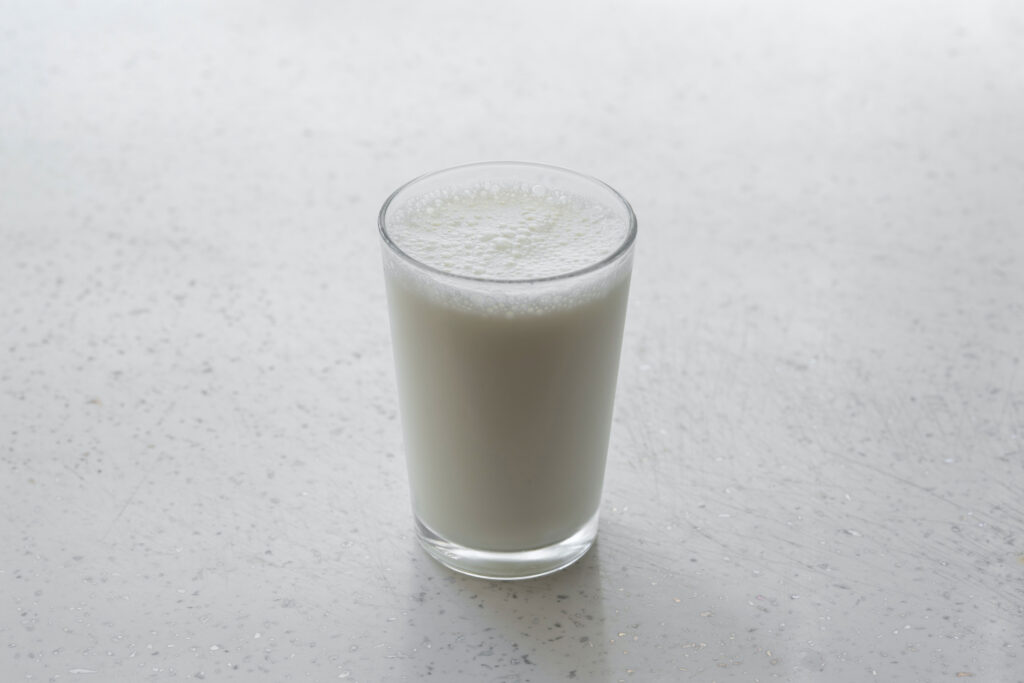Volcanoes are erupting in The Philippines, but on-fire Australia received some welcome rain. The Iran war cries have been called off and The Donald’s military powers are about to be hamstrung by the Senate. Meanwhile, his impeachment trial is starting, and we’re all on Twitter for a front-row seat.
Brewing Milk in Bioreactors
Cellular agriculture startups are culturing human and bovine cells in bioreactors to produce more sustainable milk without animals.

The United States is undergoing a severe shortage of baby formula, leaving millions of parents in a difficult spot. Breastfeeding isn’t an option for many parents, including those who cannot lactate, don’t produce enough milk, or have certain medical conditions. Even for parents who can breastfeed, it is a costly affair, as the task takes up as much time as a full-time job.
Naturally, parents are looking for alternatives such as plant-based milk, some going as far as to concoct them at home. Alternatives are not always harmful, but none of them meet the nutritional requirements of a baby. And while preventing future shortages of baby formula will require fixing supply chains, cellular agriculture startups are also developing a potential solution. Their answer, albeit a few years down the road, is cell-cultured human milk.
Cellular agriculture, or cell-ag for short, is a sub-discipline of synthetic biology that promises animal products grown in reactors instead of farms. Its proponents advocate for cell culture as a sustainable alternative to traditional agriculture as it replaces large, resource-intensive farms with bioreactors. While the term is new, the concept is not—human insulin has been produced in microbial cells for decades now, eliminating the need to slaughter pigs for insulin.
Cultured dairy ingredients such as whey protein are already commercially available, but they are grown with yeast or microbes. This kind of cell-based milk, such as that from US foodtech company Perfect Day, does not truly capture the nutrition of real milk and instead contains only one or a few milk proteins. Culturing cells derived from animals instead of microbes, on the other hand, replicates the nutritional composition of real milk more closely. Animal-based cell culture has already found limited success in creating lab-grown animal products like lab-grown meat or biofabricated leather.
Some startups are bringing together these two strands of innovations to culture milk in animal-derived cells, including those from humans. For instance, Israeli startup Wilk combines food biotechnology and mammalian cell culture to brew breast milk in bioreactors.
Dr. Tomer Keren, Vice President of R&D at Wilk, outlined how the process works. They first “collect samples from breastfeeding moms,” before isolating the cells from the mammary glands and “growing them in a controlled environment.”
The cells are then moved into a bioreactor, where favorable conditions induce the cells to create and secrete the milk components. These cells are secretory epithelial cells, specialized cells that carry the genomic blueprint to produce the entire composition of milk. Because of this, Wilk’s technology is “able to produce the entire repertoire of proteins, oligosaccharides, lactose, and different lipids,” said Dr. Keren. This mixture of nutrients is vital to providing a comprehensive mix that meets the nutritional needs of babies.
However, there are aspects of breast milk that Wilk or other companies creating cell-cultured human milk cannot replicate. The contact between a breastfeeding parent and the baby has psychological benefits for both. Breast milk also contains immune factors that are unique to each individual and aren’t replicable with current technologies.
In a few years, Wilk sees itself partnering with baby formula companies that can integrate its technology into their production systems. Other cell culture startups are cultivating cells from cows to achieve the same goal. Canadian foodtech startup Opalia is recreating whole cow milk by culturing mammary epithelial cells from cows.
Owing to their shared mammalian biology, the process for culturing cow milk is nearly identical to culturing human milk in bioreactors. Jennifer Côté, co-founder and CEO of Opalia, said that “they require a similar feed and the same lactation hormones to lactate. The main difference is in the end product that the cells produce. They both make milk, but the ratio of milk ingredients is different.” By engineering the cells, Opalia can tweak the composition of proteins and fats to any desired ratio, as well as remove lactose.
Going beyond infant nutrition, the transition to cell-cultured milk also improves sustainability. Each gallon of cow milk produced requires hundreds of gallons of water, most of which goes towards cultivation of feed crops. The dairy industry also produces significant amounts of methane and other greenhouse gases. Cell culture is far more sustainable as it cuts down the amount of water and other resources.
Cell-cultured milk faces the same challenges as other cell-ag products. Unlike brewing beers or producing insulin in microbes, culturing human or bovine cells requires reactors that mimic the three-dimensional environment of the tissue. There has been limited success in scaling up production. Moreover, sustainability by itself isn’t sufficient to convince a large enough section of consumers to switch to cell-cultured milk. It needs to be available at prices similar to, if not lower than, dairy-based milk.
Côté said that for cell-based technologies, the main technological challenge is to reduce the price of the cell feed, and that it will be possible to do so at a large enough scale. “I firmly believe that by working together to lower the price of cultured products we will be able to achieve price parity relatively quickly.”
By 2050, the global population is projected to exceed nine billion. Feeding that many people while limiting the emissions from the production of dairy, meat, or seafood will be a major challenge. Scaling up cellular agriculture could be a vital part of the solution.


